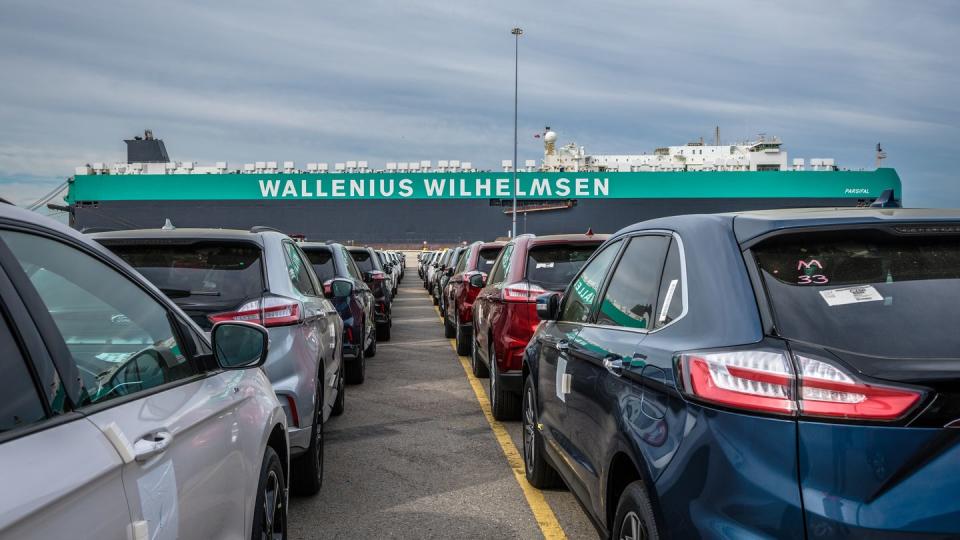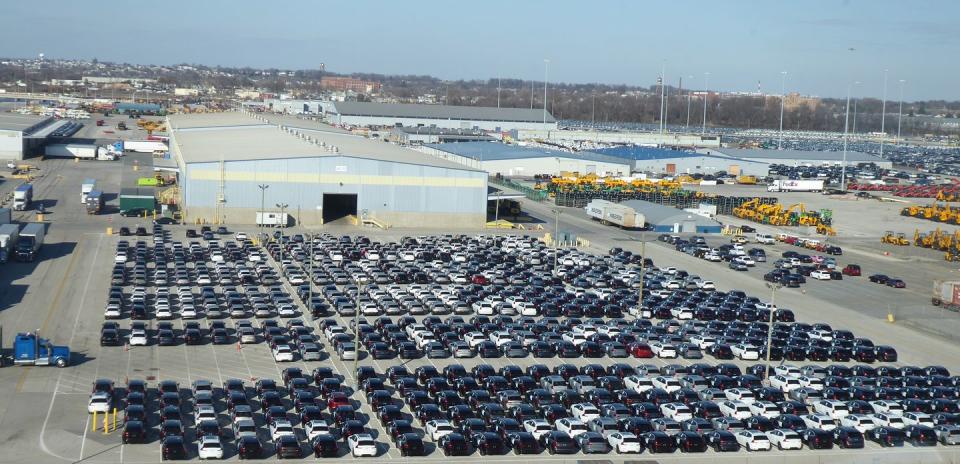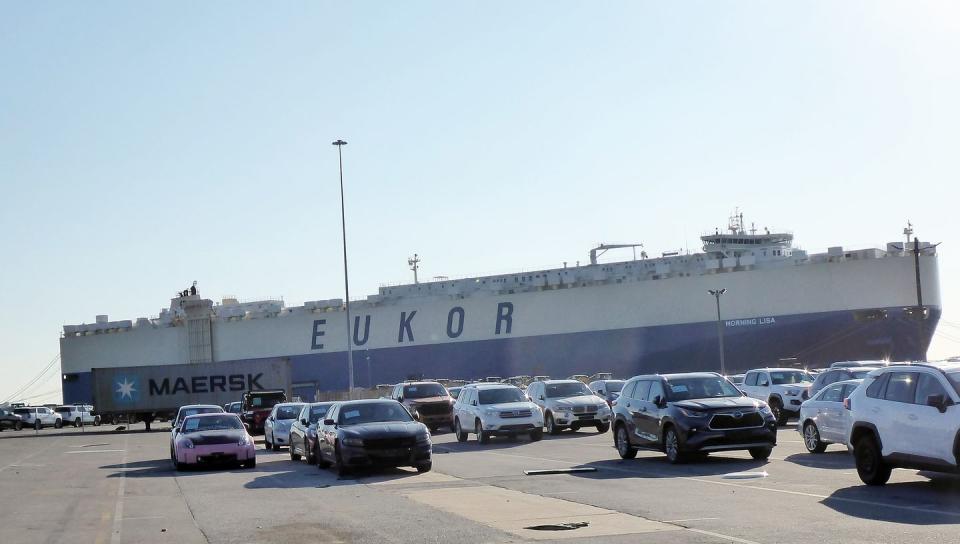Port of Baltimore Rolls More Cars Off and On Than Any Other in the States—at Least It Did

The Port of Baltimore is the largest for “roll on, roll off” vehicle shipping in the States.
The port has 710 acres devoted to auto logistics, meaning enormous parking lots everywhere.
Before the accident that saw the Francis Scott Key bridge come down and block passage to the port, a cargo ship would be back in Baltimore 95 days after leaving, having traveled through the Panama Canal to the West Coast, then around the world.
In the modern world, cars get moved around quite a bit before the end user is handed the key fob.
In the United States, the Port of Baltimore is the largest for “roll on, roll off” (ro-ro) vehicle shipping. The port has 710 acres devoted to auto logistics, meaning enormous parking lots everywhere. Since the world mostly moves goods by container these days, you might think that’s how cars travel too, but for the most part they’re driven on and off under their own steam. Let’s look at the logistics on just one day.
The cars, trucks, and construction equipment facing toward the 13-deck Morning Lisa in the gigantic Port of Baltimore on February 5 this year were, in general, getting ready to board the 8400-vehicle ro-ro carrier for destinations around the world. The vehicles facing away from the Lisa had just come off it and were waiting to be loaded, either on the fleets of waiting truck transporters or into a rail car.

Consider the logistics of loading and unloading 8400 cars, then imagine squads of drivers, and more drivers (in battered minivans) just to run the drivers back to their next vehicle.
Now consider the gangs of union stevedores working as spotters (to elbow the cars in a few inches away from the next one) and lashers (to tie them down through convenient holes in the deck). Not to mention the Morning Lisa’s crew of 23 that takes the 761-foot, 68,701-gross tonnage vessel around the world.
The assumption then (that is, before the bridge accident that forced ships to be diverted) was that it would be back in Baltimore in 95 days, having traveled through the Panama Canal to the West Coast, then on to Japan, Australia, New Zealand, and many other ports. Before Baltimore, the Lisa was in Europe.
Wallenius Wilhelmsen (WW), Scandinavian-owned, is the largest ro-ro shipper in the world, with a fleet of 130 mostly Lisa-size ships. But, in partnership with the world’s automakers, shippers like WW do much more than just move cargo. Hard up against acres of parking lots are giant sheds for “vehicle processing,” a euphemism for the type of accessorizing you probably thought was done by dealers.
In a big room full of fresh-from-Japan Subarus, teams of workers were installing trailer hitches, remote starters, short-throw shifters, and anything else dealers or the larger regional office might want. The automakers have their own representatives on the floor, and Subaru had Jonathan Smith in Baltimore. “It saves time to do the work here rather than in Japan,” Smith said. “This way they get two Crosstreks, one with splash guards and one without.”
And WW has body shops, too, busy fixing the little dings and blemishes that occur during ocean voyages (and sometimes on land, such as the Nissan Versa that got crushed on a car carrier and was missing its windshield and roof).


 Yahoo Autos
Yahoo Autos 